1. Introduction:
Egyptian mythology, a profound tapestry of tales and deities, serves as a window into the soul of ancient civilization, revealing its beliefs, aspirations, and fears. Central to this intricate web is Geb, a primeval deity symbolizing the very land of Egypt. As the Earth god, his influence stretches far and wide within the pantheon, playing a pivotal role in shaping the cosmological views of the ancients. Embracing Geb’s tales allows us a deeper dive into the rich cultural heritage of Egypt, illuminating the intertwining relationships of gods and mortals in their timeless narrative.
| Origin | Ancient Egyptian Civilization |
|---|---|
| Classification | God |
| Family Members | Shu (Father), Tefnut (Mother), Nut (Sister/Wife), Osiris, Isis, Seth, and Nephthys (Children) |
| Region | Egypt |
| Associated with | Earth, Vegetation, Fertility, Earthquakes |
2. Historical Origins
Geb’s Familial Ties
- Geb’s Lineage:
Origin stories in Egyptian mythology frequently underline the interconnected nature of the divine entities. Geb was no exception. He was born to the sky goddess, Nut, and the air god, Shu. This celestial lineage rooted him firmly in the pantheon, making him an essential figure in the cosmic narrative. - Relation to Other Deities:
Geb’s familial connections didn’t end with his parents. He was intricately tied to other eminent figures such as Osiris, Isis, Seth, and Nephthys. These relationships intricately wove together tales of rivalry, love, and power, further emphasizing Geb’s crucial role in the myriad stories that make up Egyptian mythology.
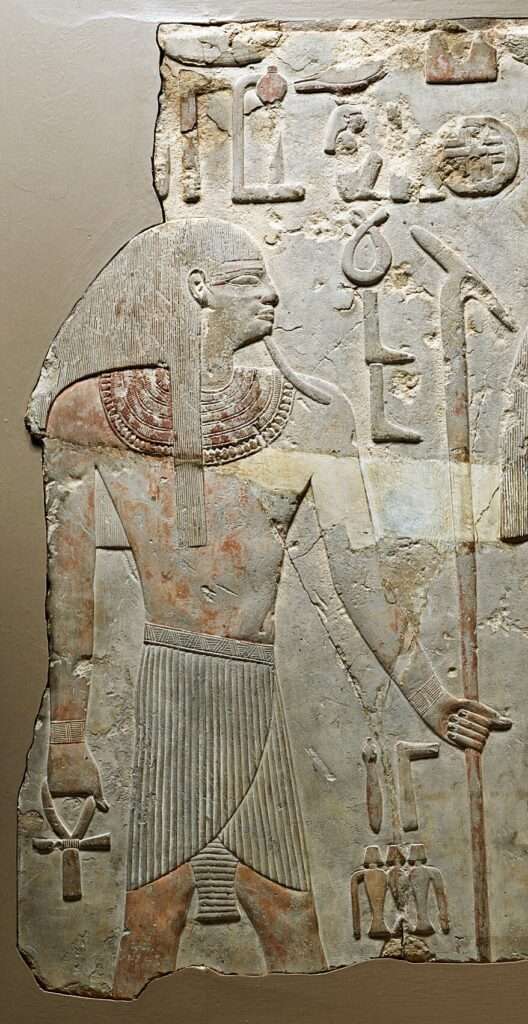
Geb’s Role as the Earth God
- Embodiment of Egypt:
More than just a deity, Geb was the physical representation of the land of Egypt itself. In many tales, he was depicted as holding the regions of Upper and Lower Egypt, emphasizing his all-encompassing nature. This made him not just a god, but the very ground the ancient Egyptians walked upon. - Nature’s Guardian:
Egypt didn’t confine Geb’s dominion to just the sand and Nile; every living being within Egypt had a deep connection to him. Plants sprang from him, animals wandered across his vast expanse, and people believed he controlled natural phenomena, from the gentle touch of the breeze to the fearsome shake of earthquakes.
Depictions of Geb in Ancient Art
- Iconic Imagery:
Art bears witness to beliefs, and ancient Egyptians often depicted Geb lying below the sky goddess Nut, with his body representing the Earth. They commonly illustrated plants, especially the esteemed papyrus, sprouting from him, emphasizing his nurturing nature. - Interpreting the Art:
These depictions weren’t mere artistic choices; they held profound cosmological significance. By portraying Geb as the Earth with Nut arching over him as the sky, the ancients conveyed their understanding of the world’s structure. It was a symbolic representation of the eternal embrace between the Earth and the sky, underlining the cyclical nature of life and death in their belief system.
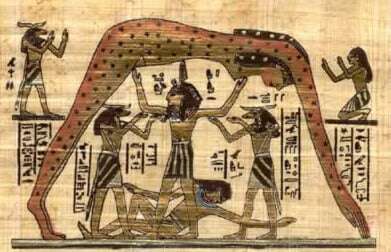
3. Unique Aspects and Lesser-Known Facts about Geb
The Divine Laughter
- The Earth’s Tremor:
- The myth intriguingly suggests that Geb’s laughter causes earthquakes. Instead of attributing these seismic events to mere geological activity, people believed the Earth god’s mirth was the cause. Such tales highlight the ancients’ attempts to understand and personify natural events, seeking explanations within their divine narratives.
- Interpretations and Significance:
The notion of Geb’s laughter causing earthquakes wasn’t just a simple story. It held deeper cultural and religious implications. To the ancient Egyptians, this could symbolize the interconnectedness of joy, might, and unpredictability in their deities. It underscored the idea that even in moments of happiness, the gods held immense power, impacting the mortal realm in profound ways.
Geb’s Role in Judging the Dead
- Balancer of Truth and Justice:
While Geb’s earthly persona is well-established, lesser known is his role in the afterlife. Tied intrinsically to Ma’at, the goddess of truth and balance, Geb played a role in ensuring that souls were judged fairly. His association emphasized the cosmic balance, intertwining life, death, and divine justice. - Weighing of the Heart:
In the critical ‘Weighing of the Heart’ ceremony, where a deceased’s heart was weighed against the feather of Ma’at, Geb’s presence was felt. While not always the primary judge, his essence, as the very land where the mortals lived and died, resonated in the background, serving as a silent witness to the fate of souls.
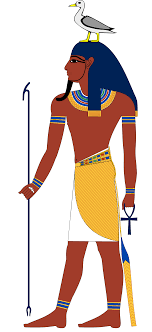
The Syncretism of Geb with other Gods
- Blending with Aker:
Over time, gods evolve, and their stories intertwine. Geb was no exception. He exhibited overlaps with deities like Aker, another earth-related god. Such syncretism reflects the fluid nature of ancient religious beliefs, where gods could merge or adapt based on changing cultural and societal needs. - Changing Faces across Dynasties:
The perception of Geb wasn’t static. As dynasties rose and fell, as foreign influences intermingled with native beliefs, Geb’s image and stories underwent transformations. By tracing these evolutions, one can glean insights into the broader historical and sociopolitical shifts within ancient Egypt, showcasing the dynamic relationship between mythology and real-world events.
4. Importance of Geb in Modern Context
Relevance in Archaeological Studies
- Unearthed Discoveries:
Even millennia later, Geb continues to make his presence felt through archaeological findings. Excavations across Egypt have unveiled artifacts, papyrus scripts, and relics that highlight the significance of Geb worship, giving modern society a tangible connection to ancient beliefs. - Monuments to the Earth God:
Temples dedicated to Geb, while not as numerous as those for gods like Ra or Osiris, are still significant. These structures, along with inscriptions and statues, serve as enduring testaments to his revered status. Such findings provide invaluable insights into rituals, festivals, and ceremonies centered around the Earth deity, further deepening our understanding of ancient Egyptian religiosity.
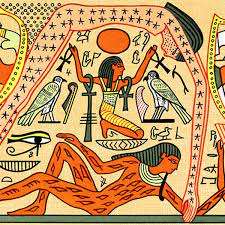
Geb in Modern Popular Culture
- From Hieroglyphs to Hollywood:
Geb, like many of his pantheon peers, has found a place in contemporary media. Movies, novels, video games, and graphic novels have often borrowed from his lore, integrating the Earth god into modern narratives, albeit with varying degrees of fidelity to the source. - Truth versus Fiction:
While Geb’s presence in popular culture aids in keeping the mythology alive for newer generations, not all representations stay true to the original tales. Analyzing these portrayals reveals a spectrum: from accurate depictions rooted in genuine research to more liberal interpretations inspired by the god’s essence but tailored for modern consumption.
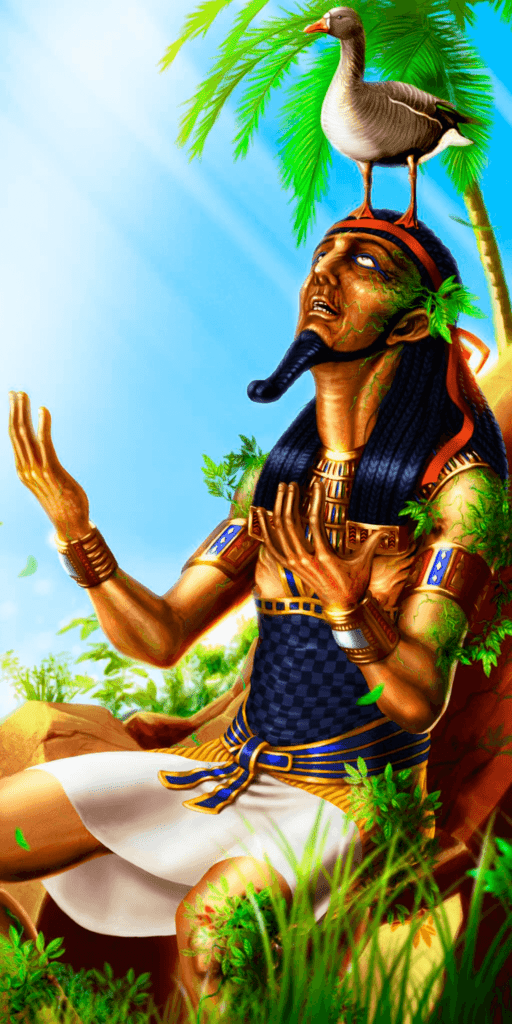
Current Worship and Reverence
- Modern Devotees:
While mainstream worship of the ancient Egyptian pantheon has waned, pockets of communities, especially within neopagan and Kemetic circles, still hold Geb in esteem. These groups, though often small, are vital in preserving and continuing the millennia-old traditions. - Contemporary Rituals:
Although the grand ceremonies of yore are long gone, modern rituals inspired by ancient practices have emerged. These may involve offerings, chants, or meditations dedicated to Geb, aiming to connect with the Earth and its divine guardian. While they may differ from traditional practices, their essence, venerating the Earth and seeking harmony, remains consistent with ancient ideals.
5. Comparing Geb with Earth Deities
Greek Mythology
- Geb and Gaia:
In the Grecian pantheon, Gaia stands out as the primordial Earth goddess, a being from whom many of the other gods and Titans descended. Much like Geb, Gaia was not just a deity but an embodiment of the Earth itself. Both were seen as nurturing figures, providing sustenance and life to their respective civilizations. However, while Geb’s myths often emphasize his relationships and role within the larger pantheon, Gaia’s tales frequently focus on her offspring and the ensuing conflicts among them.
Norse Mythology
- Geb and Jörð:
Jörð, in Norse lore, is the personification of the Earth and is often linked to fertility and motherhood. Like Geb, she has divine offspring, notably Thor, the god of thunder. While Geb’s tales often intertwine with those of the sky (through his relationship with Nut), Jörð’s stories often involve her children and the elemental powers they wield. Both, however, underline the foundational importance of the Earth in their respective mythologies.
Hindu Mythology
- Geb and Prithvi/Bhudevi:
Prithvi and Bhudevi are Earth goddesses in Hindu mythology, revered for their nurturing nature and their role as sustainers of life. They are often depicted in a dual relationship with the sky or the cosmic order. Geb shares similar attributes, being the foundational land that supports life. Furthermore, rituals in both Egyptian and Hindu practices emphasize the importance of respecting and venerating the Earth, acknowledging its pivotal role in the cosmic order.
Insights from Comparative Mythology
- Universality of Earth Worship:
Geb’s tales, when viewed alongside those of Gaia, Jörð, and Prithvi, highlight a fascinating pattern: ancient civilizations, regardless of geographic or cultural differences, recognized and revered the Earth. This universality underscores the inherent human need to personify and honor the land they inhabit. The consistent appearance of Earth deities across different cultures indicates a shared acknowledgment of the Earth’s significance, not just as a sustainer of life but as a divine entity deserving of reverence and gratitude. Through these comparative insights, we’re reminded of our enduring bond with our planet and the age-old traditions that celebrate it.
7. Conclusion
Geb, the Earth god of ancient Egypt, stands as an emblematic figure, representing both the tangible land of Egypt and the spiritual beliefs that underpinned its society. As an elemental deity born of the cosmos, his narratives, from familial ties to roles in afterlife judgments, offer a profound insight into the mindset and values of ancient Egyptians. Comparing Geb with Earth deities from other cultures further accentuates the universal human instinct to venerate and personify the land that sustains us. In contemporary times, while we may not actively worship these ancient deities, understanding them is pivotal. They serve as mirrors, reflecting not just the myths of yore but also the collective aspirations, fears, and values of entire civilizations. Delving into the tales of Geb and his counterparts reminds us of the intricate tapestry of human history and the shared reverence for our planet that unites us across ages and cultures.
